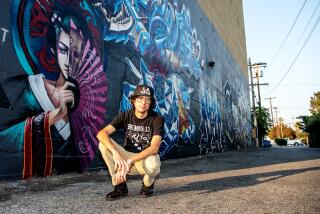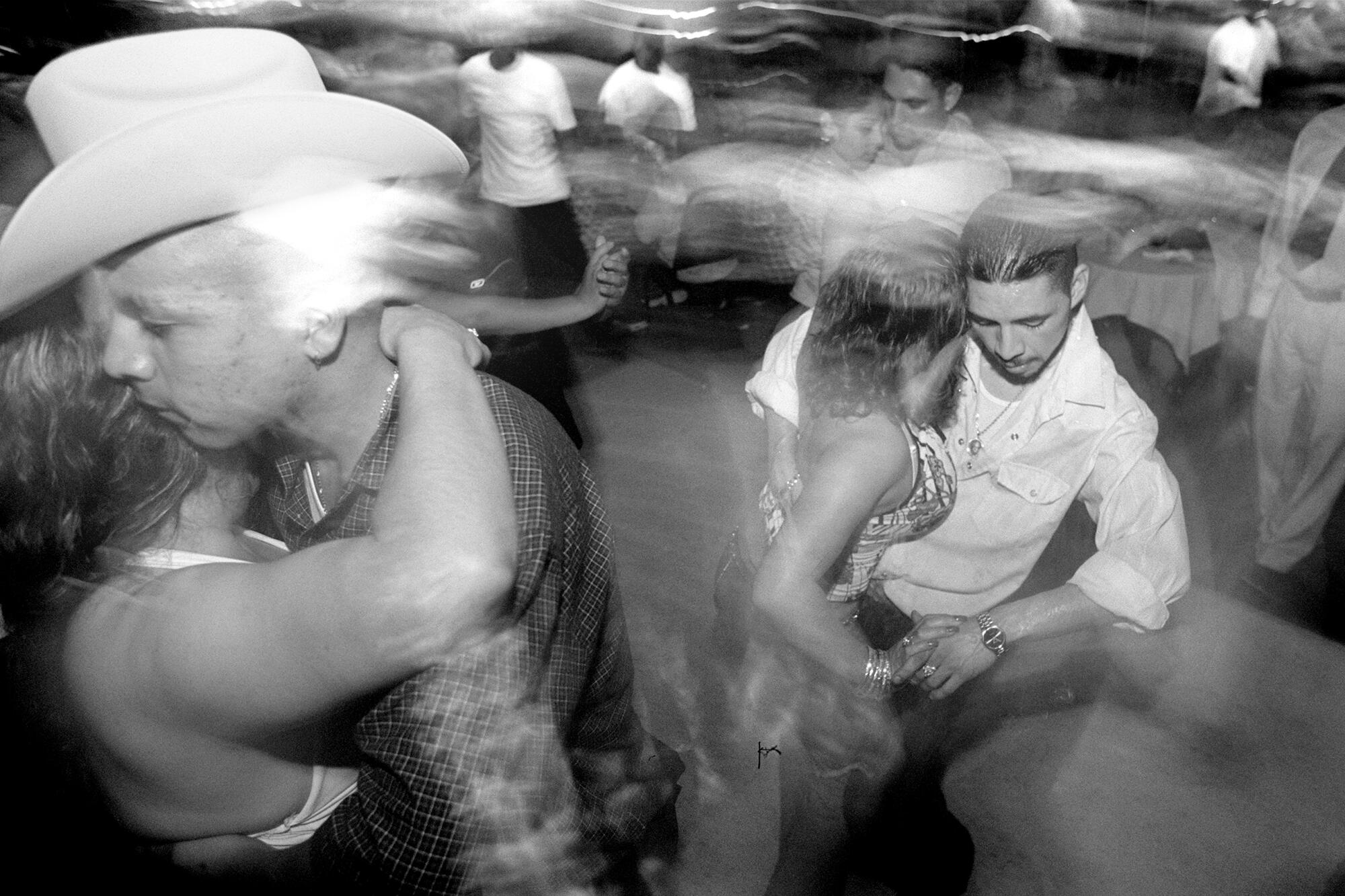
Couples dance at La Zona Rosa dancing club on Cesar Chavez Avenue.
(Aurelio Jose Barrera / Los Angeles Times)
- Share via
Aurelio Jose Barrera, a longtime Los Angeles Times photographer who helped the paper win a Pulitzer Prize with a groundbreaking series on L.A.’s overlooked Latino communities, has died. In retirement, he launched a one-man crusade to deliver food to the homeless in those communities.
As an intern, Barrera shot black-and-white photos of everyday moments in overlooked Latino communities, which his team felt were covered only when crime occurred. Their project won the 1984 public service award, despite initial skepticism from The Times’ editor.
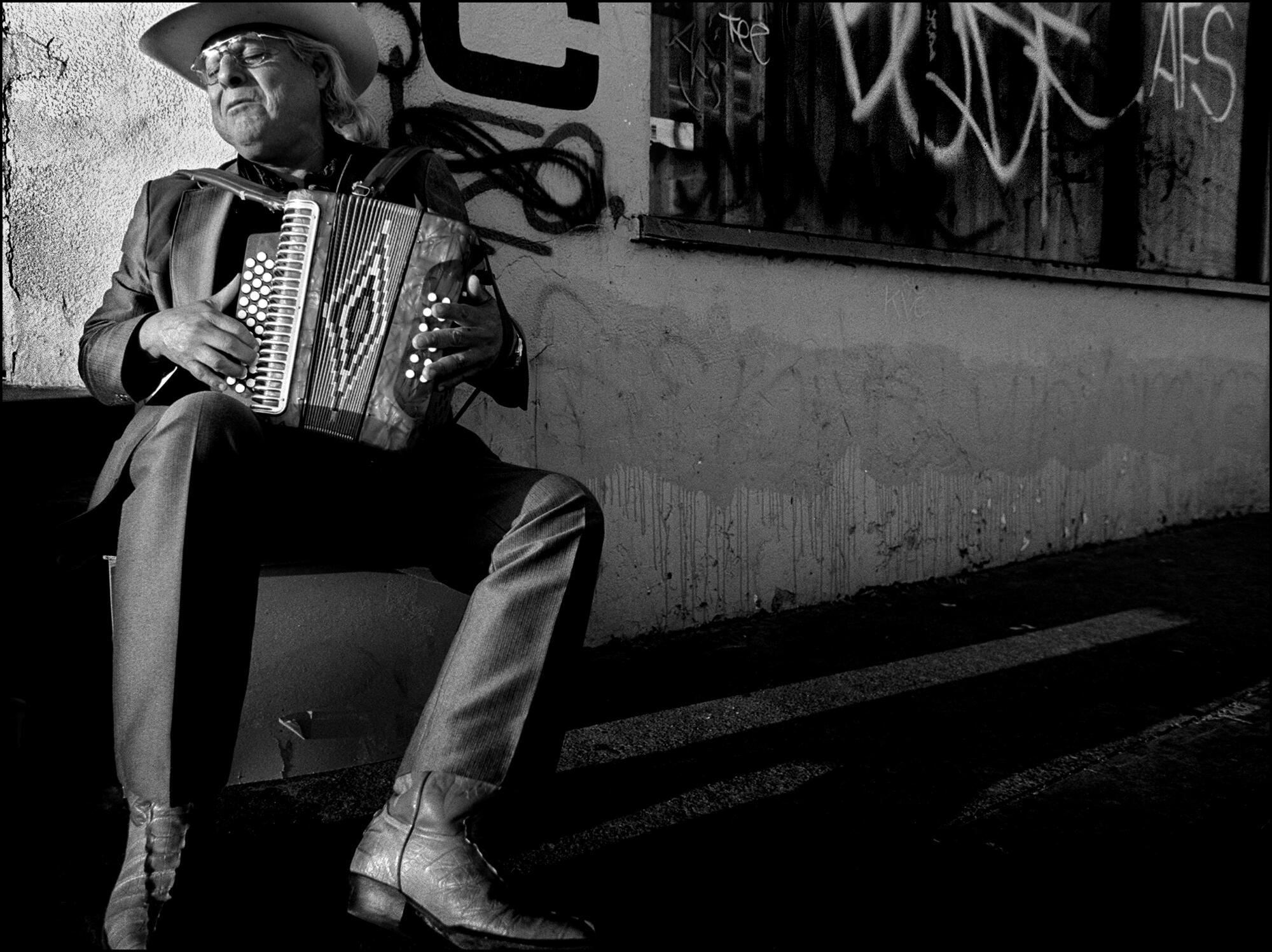
Antonio Hernandez plays his accordion early on a Sunday morning on the steps of Vallarta Tires and Auto Service.
(Aurelio Jose Barrera / Los Angeles Times)
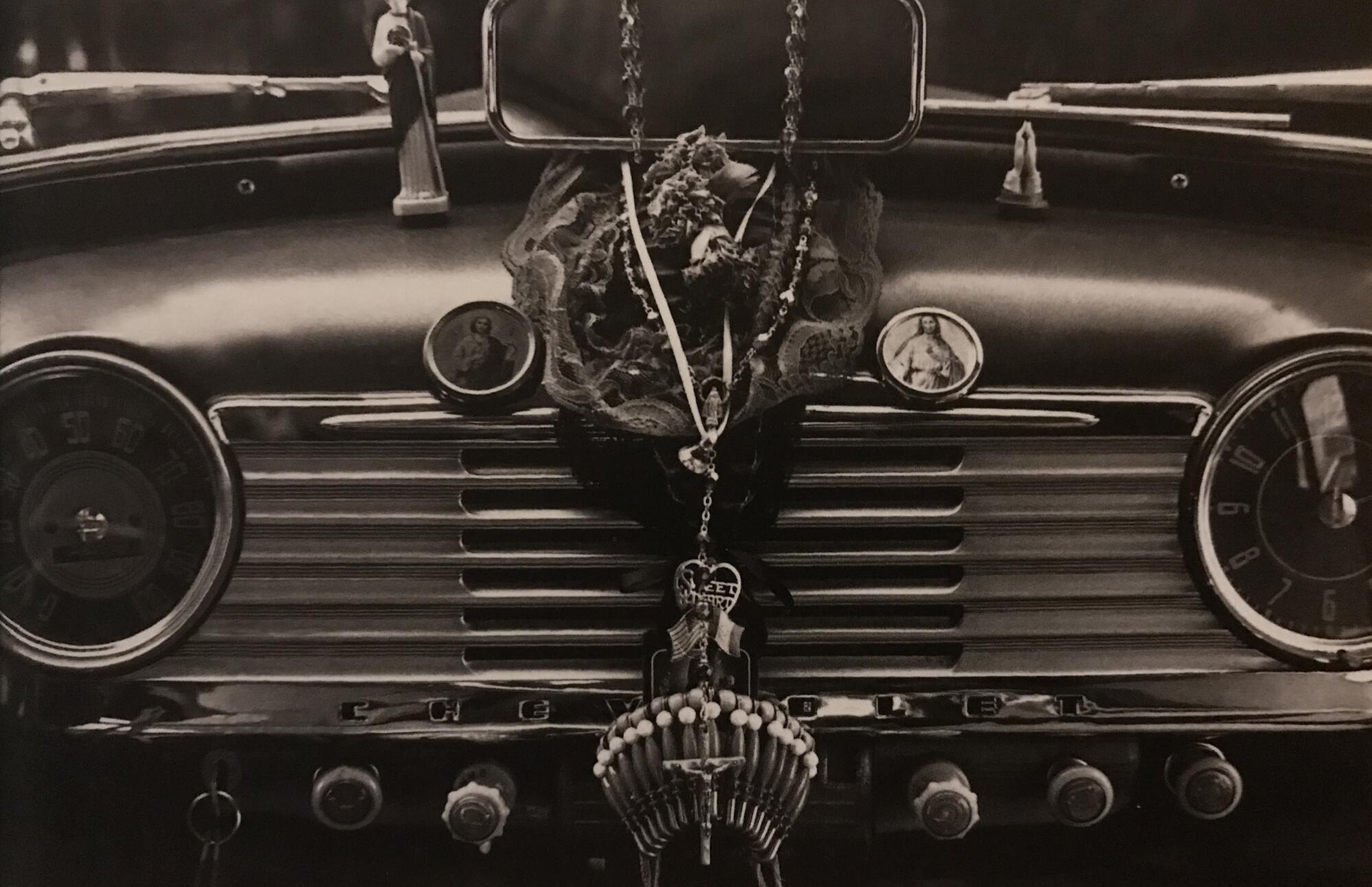
Religious symbols hang on an automobile dashboard in Los Angeles.
(Aurelio Jose Barrera / Los Angeles Times)
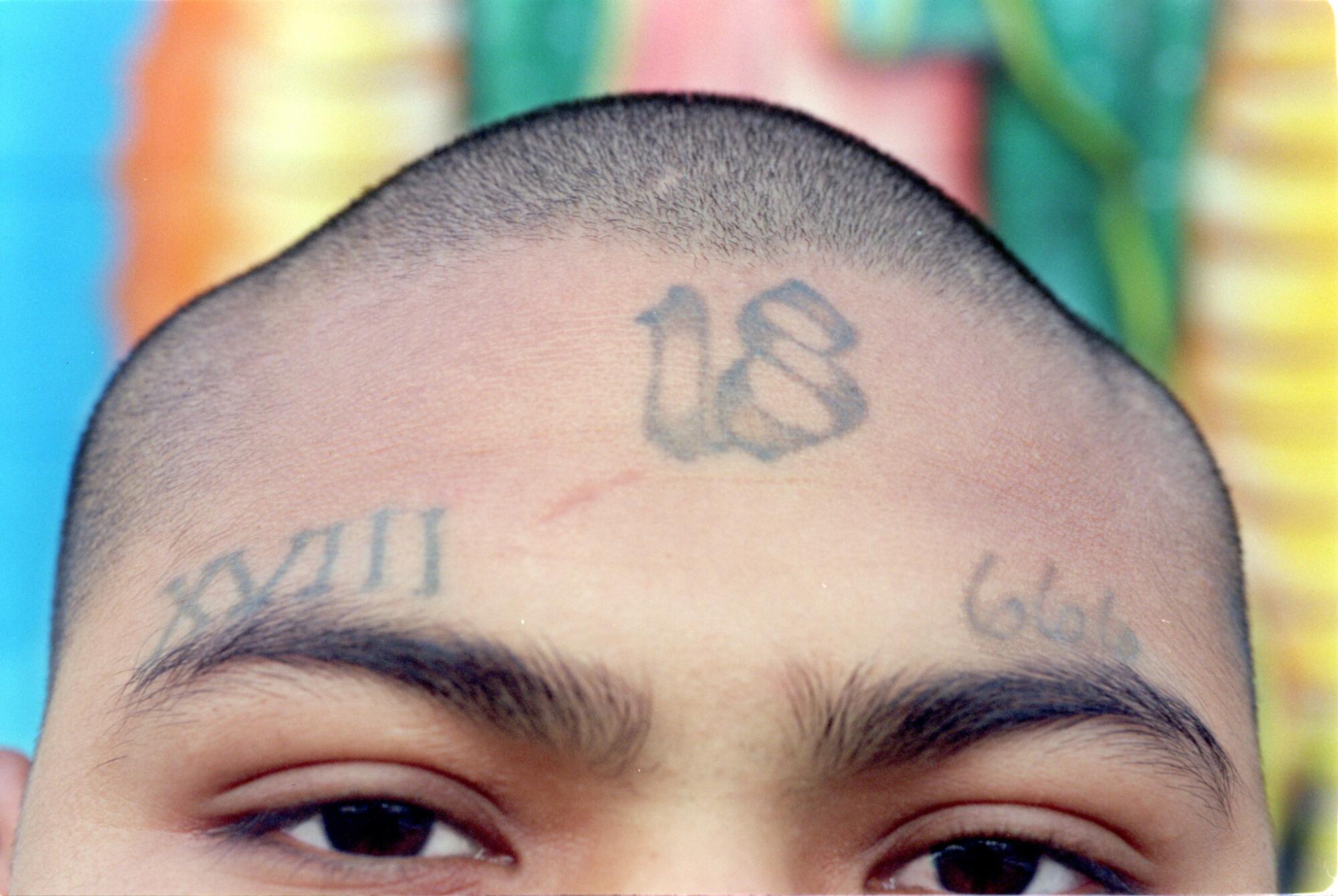
An 18th Street gang member photographed in South Los Angeles.
(Aurelio Jose Barrera / Los Angeles Times)
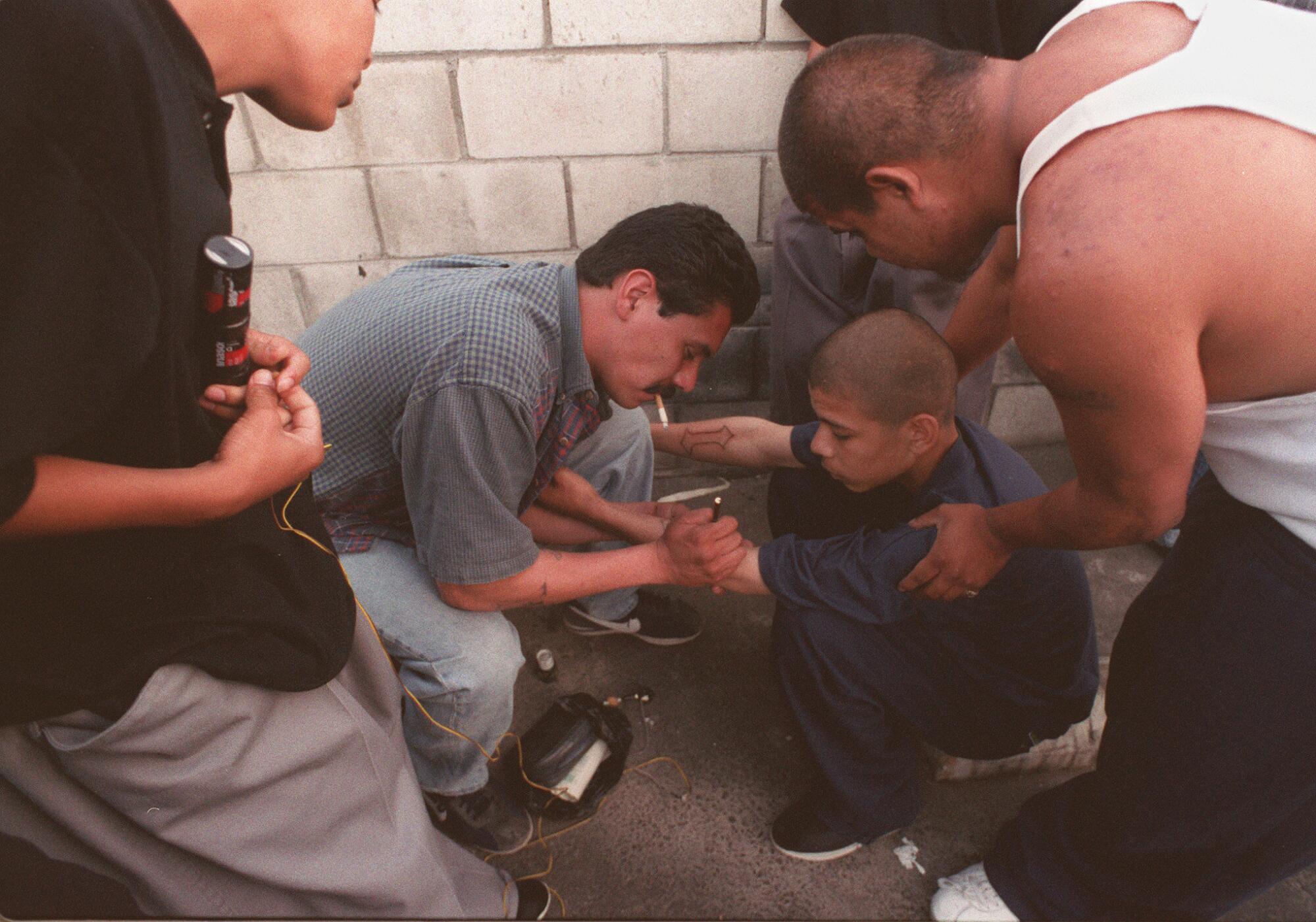
An 18th Street gang member, 14, gets a “1” and an “8” tattooed on his forearm by a roving tattooist.
(Aurelio Jose Barrera / Los Angeles Times)
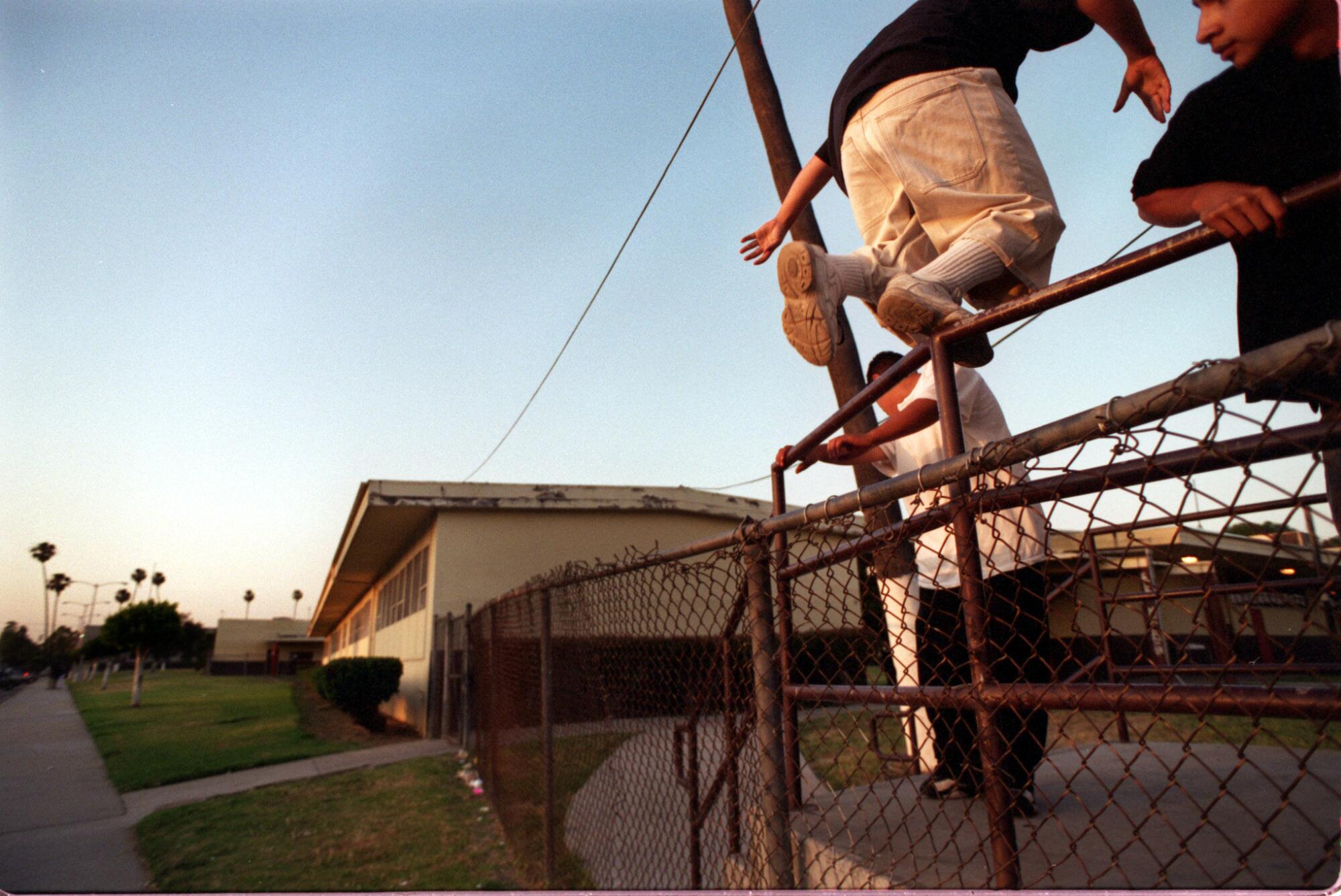
18th Street gang members climb a fence at Morningside High in Inglewood.
(Aurelio Jose Barrera / Los Angeles Times)
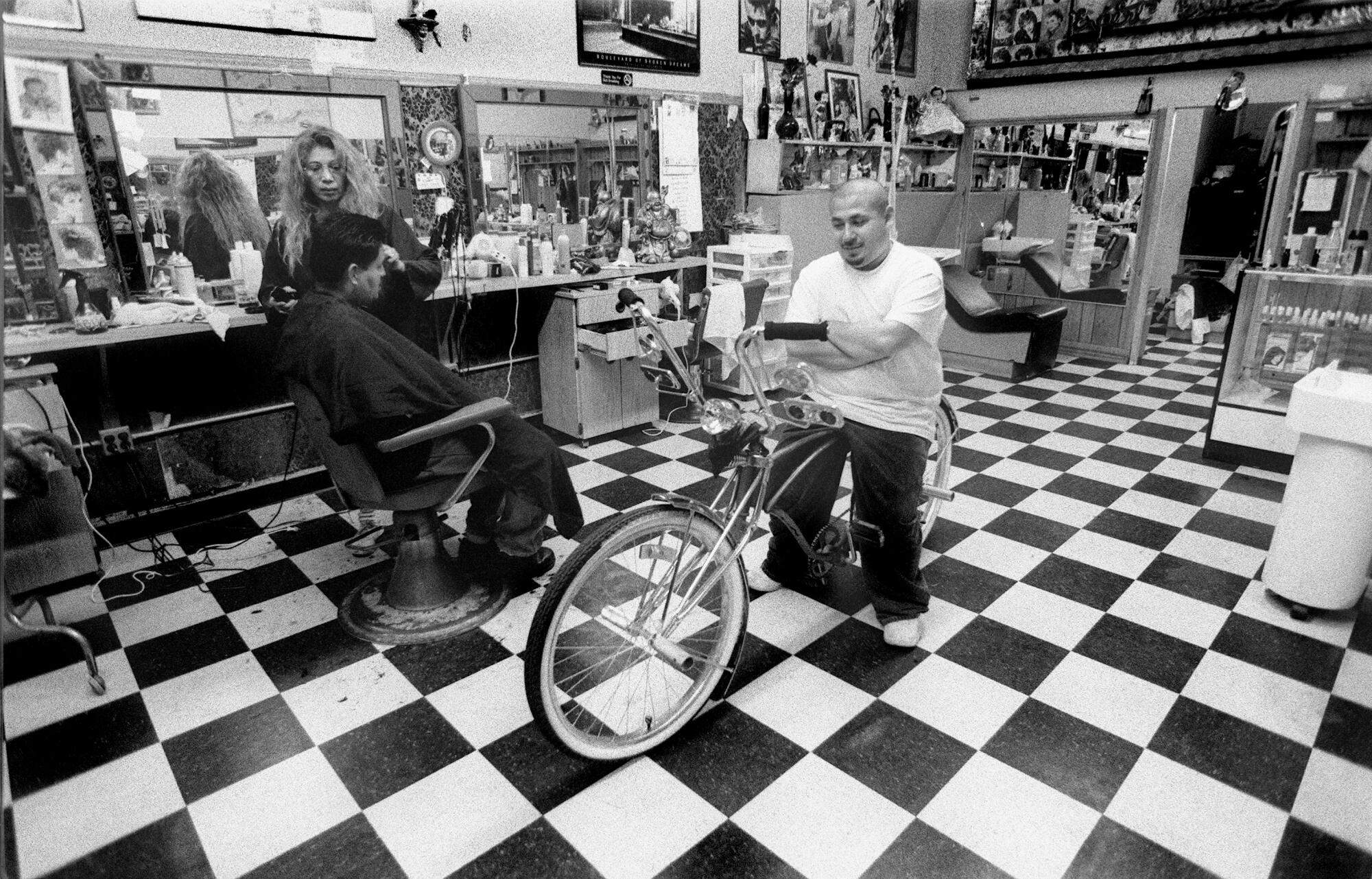
At work with Norma Galindo at Norma’s Beauty Salon on Cesar E. Chavez Avenue.
(Aurelio José Barrera / Los Angeles Times)
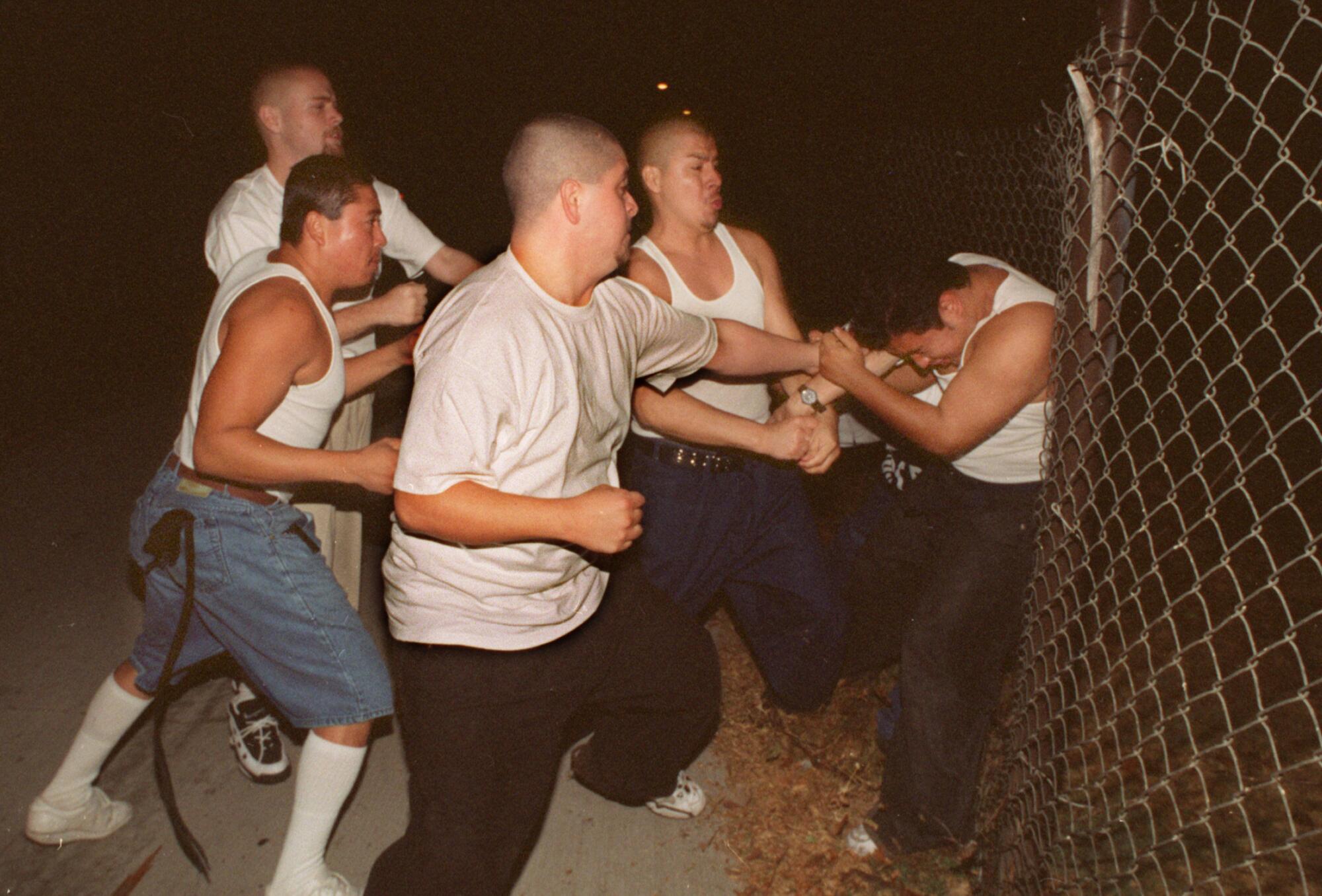
An initiation into the 18th Street gang by four 18th Streeters in an alley in Santa Ana.
(Aurelio Jose Barrera / Los Angeles Times)
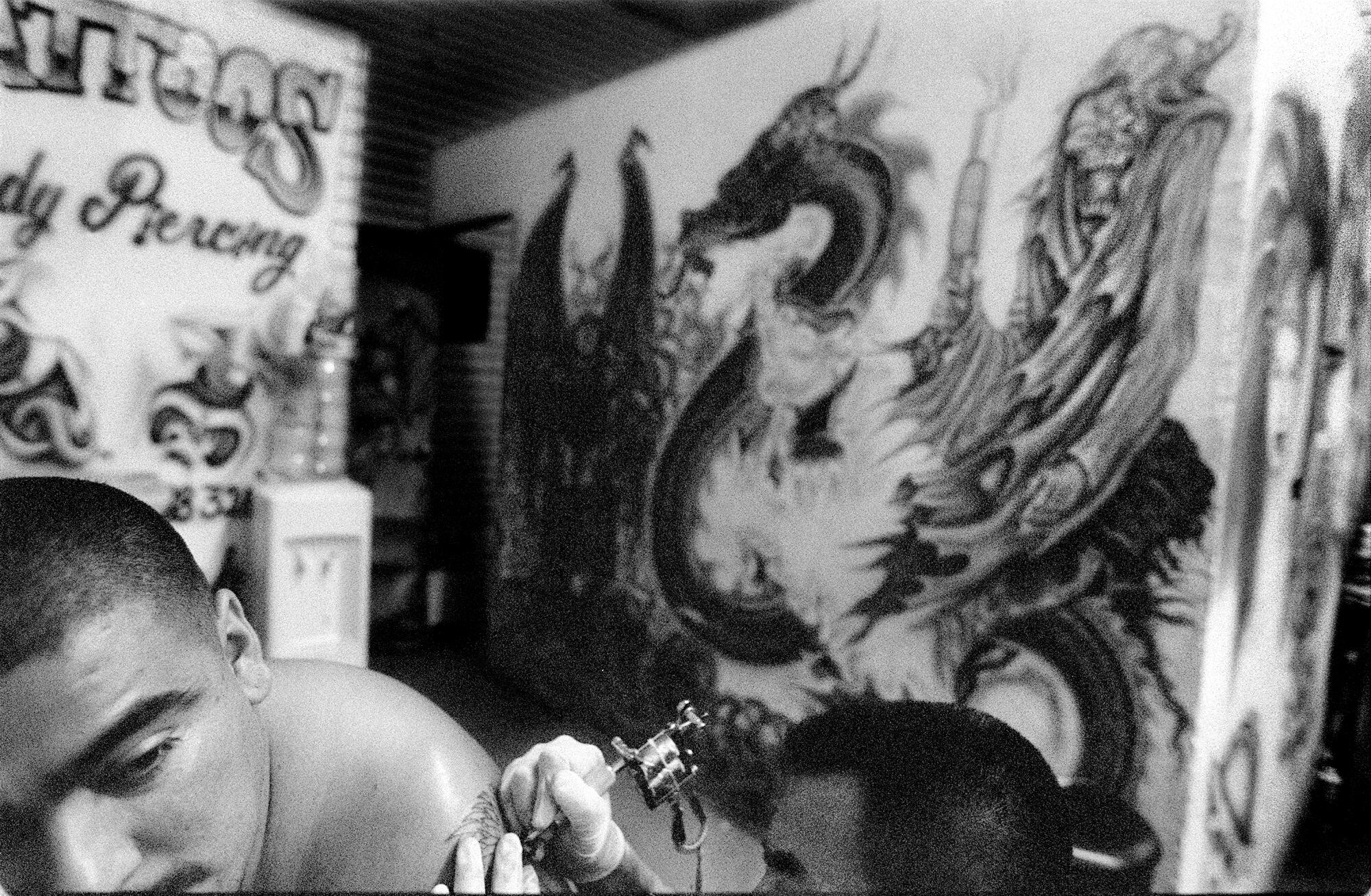
Tattoo artist Jesus “Chuy” Rangel painstakingly creates a design at the City of Angels Tattoo Shop.
(Aurelio Jose Barrera / Los Angeles Times)
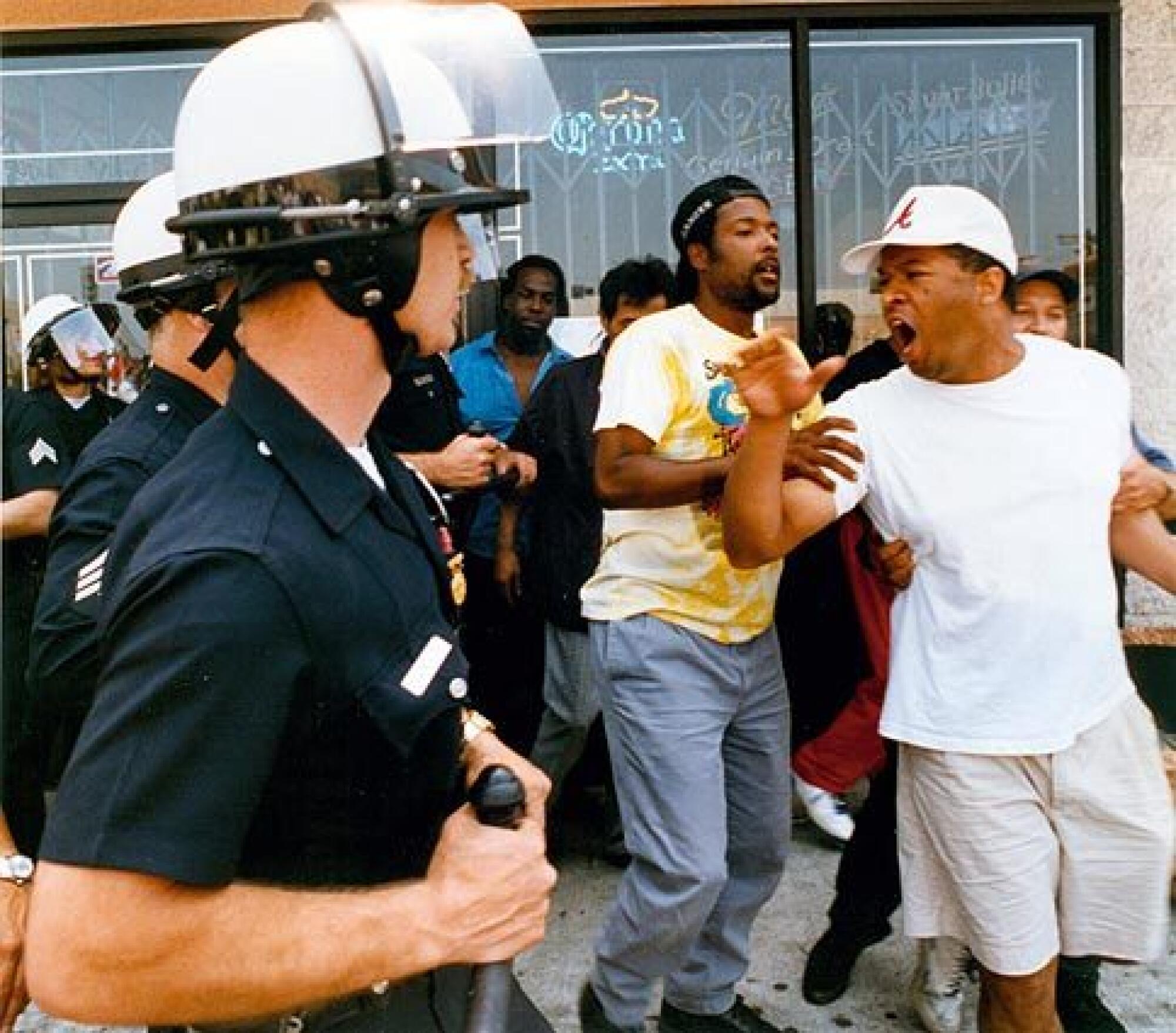
An argument between police and civilians erupts before a rock- and brick-throwing incident at the corner of Vermont Avenue and 1st Street in Los Angeles during the L.A. riots in April 1992.
(Aurelio Jose Barrera / Los Angeles Times)
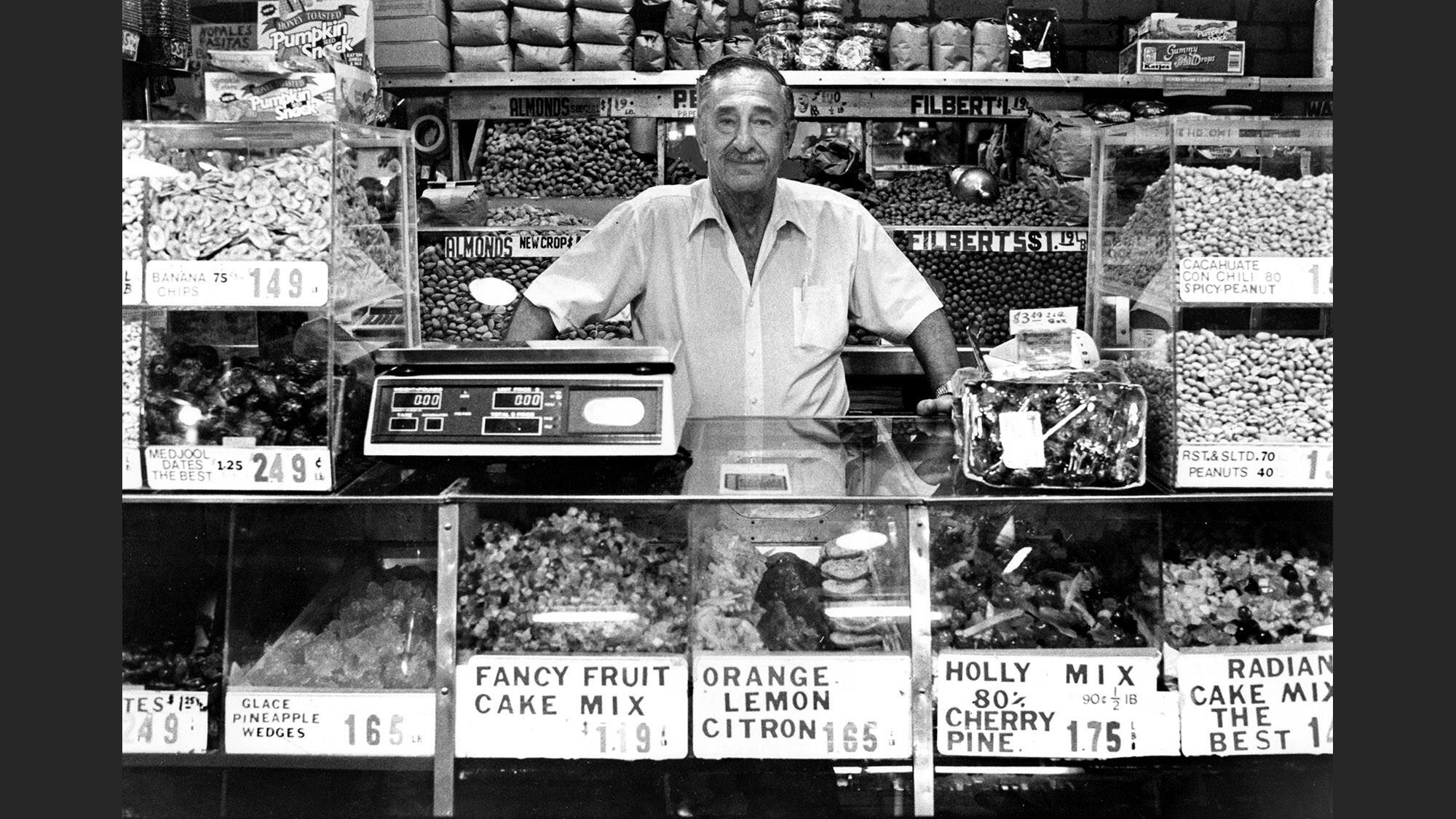
Irv Karan at his dried fruit and nuts stand at Grand Central Market in August 1985.
(Auerlio Jose Barrera / Los Angeles Times)
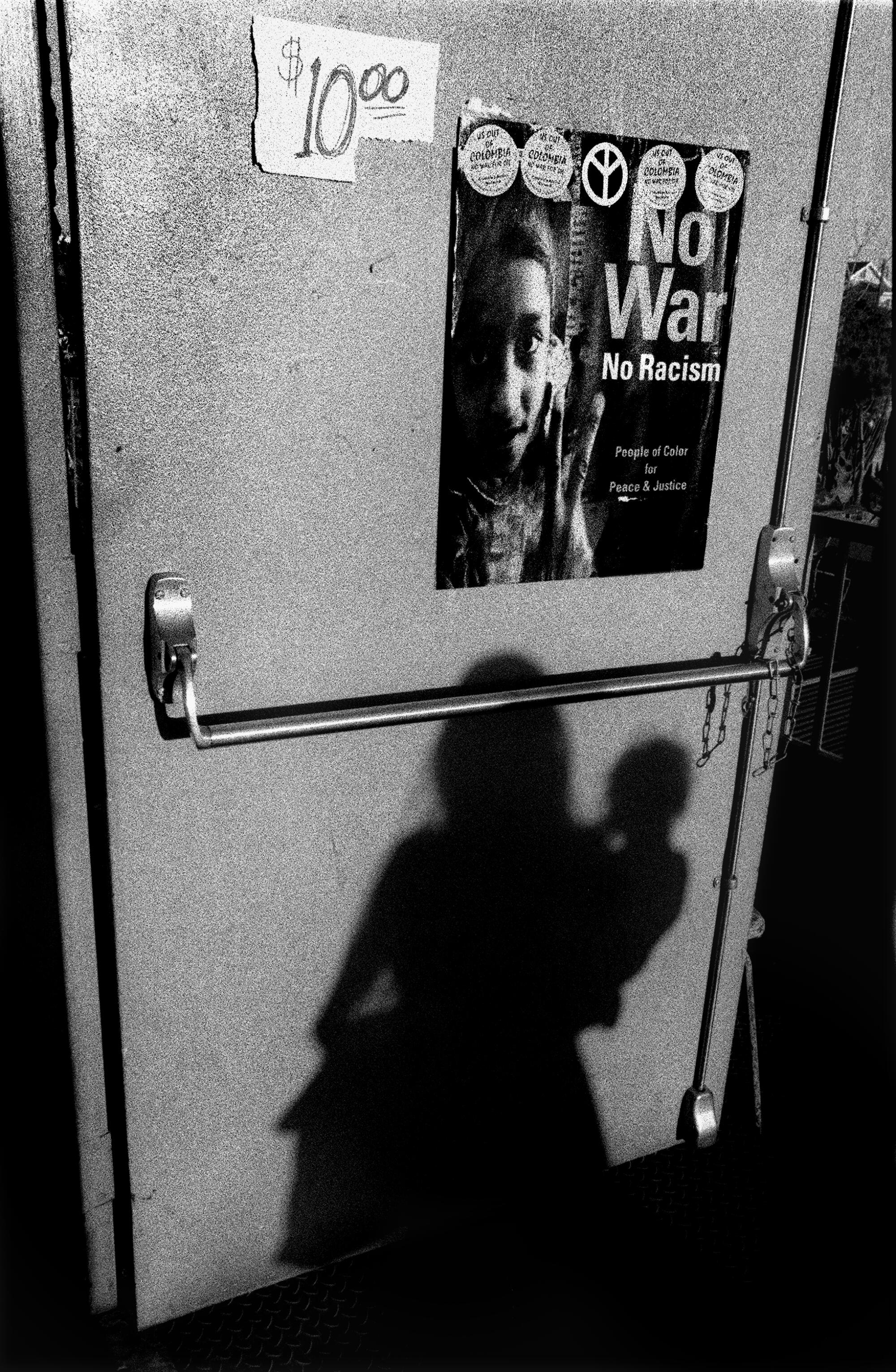
A woman carries a child into a fundraiser at the Self Help Graphics & Art gallery in Los Angeles.
(Aurelio Jose Barrera / Los Angeles Times)
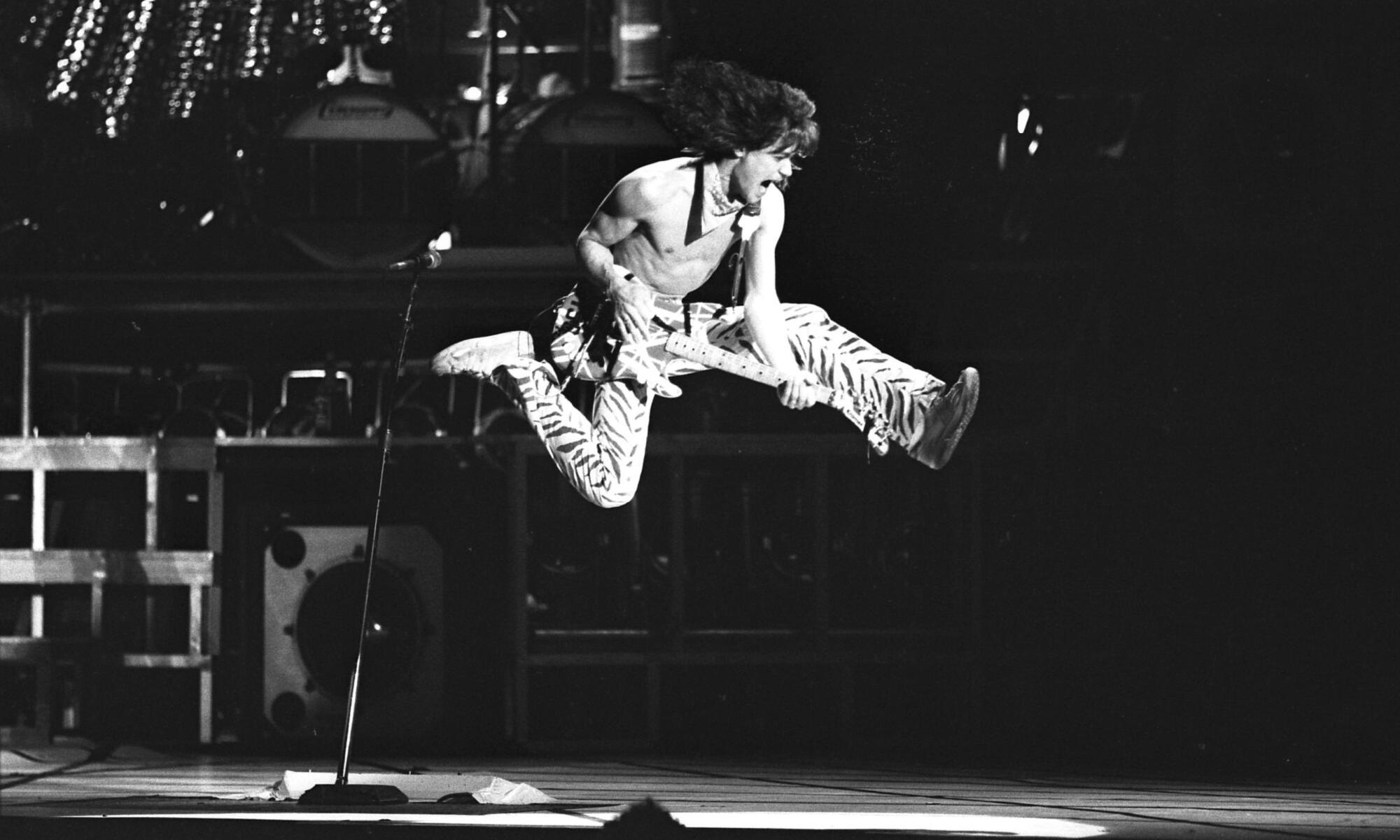
Guitarist Eddie Van Halen goes airborne during a Los Angeles performance in 1984.
(Aurelio Jose Barrera / Los Angeles Times)
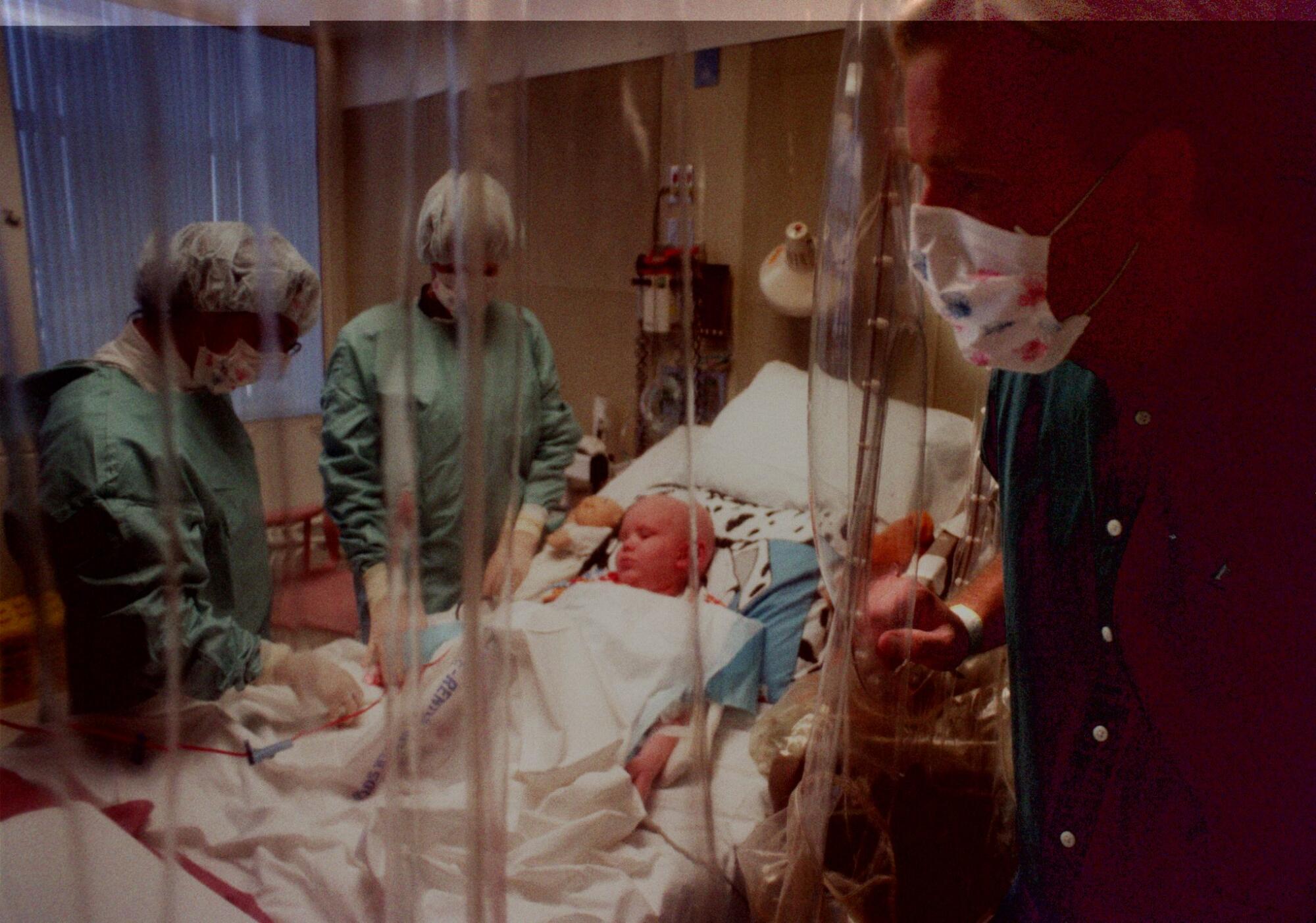
At Children’s Hospital of Orange County, John Mash of Corona watches his son’s procedure through a plastic curtain.
(Aurelio Jose Barrera / Los Angeles Times)
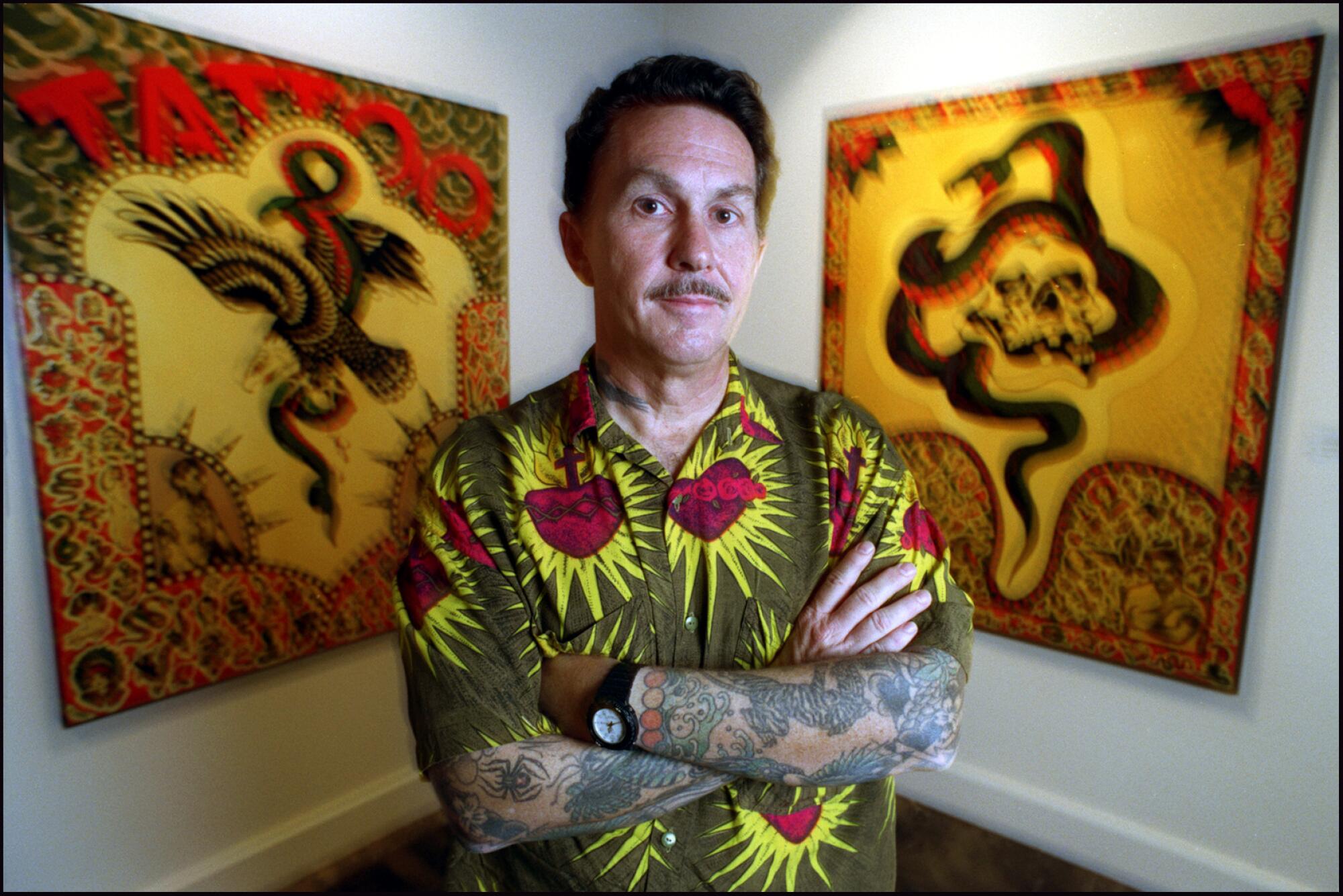
Tattoo artist Don Ed Hardy, who curated the 1995 “Eye Tattooed America” exhibition at Laguna Art Museum.
(Aurelio Jose Barrera / Los Angeles Times)
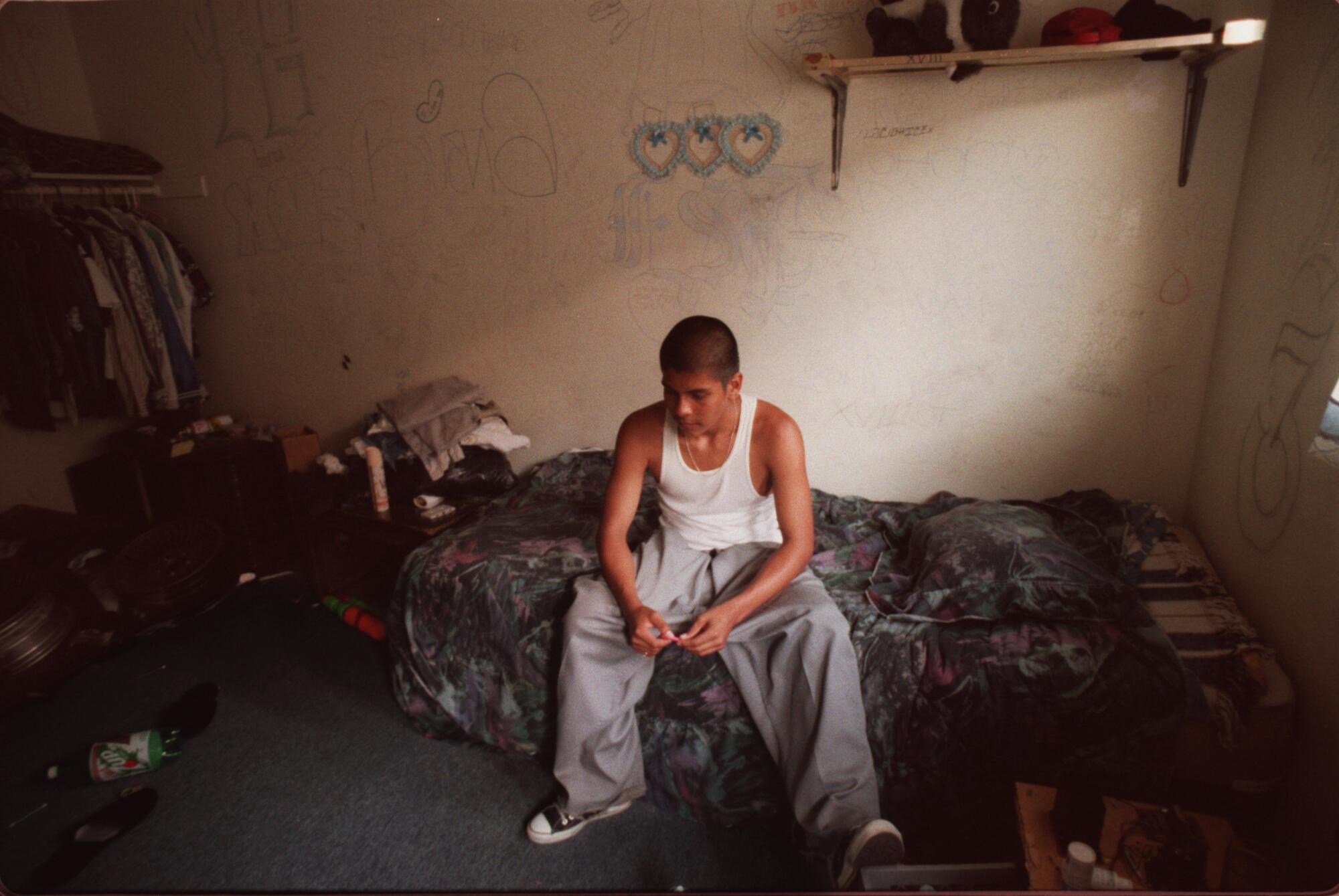
An 18th Street gang member sits in his graffiti-covered bedroom in his family’s Inglewood apartment.
(Aurelio Jose Barrera / Los Angeles Times)
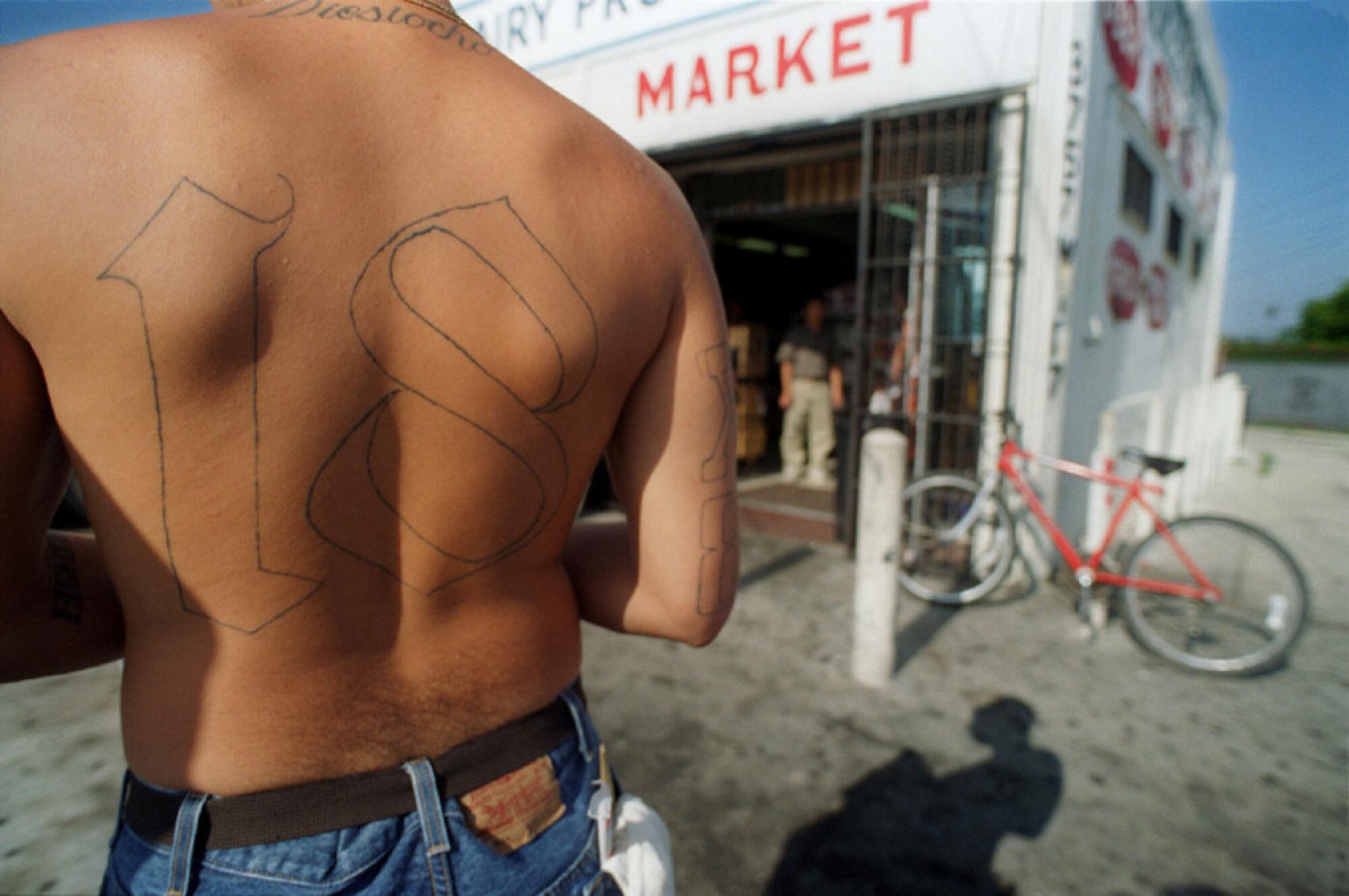
An 18th Street gang member hangs out at an Inglewood market.
(Aurelio Jose Barrera / Los Angeles Times)
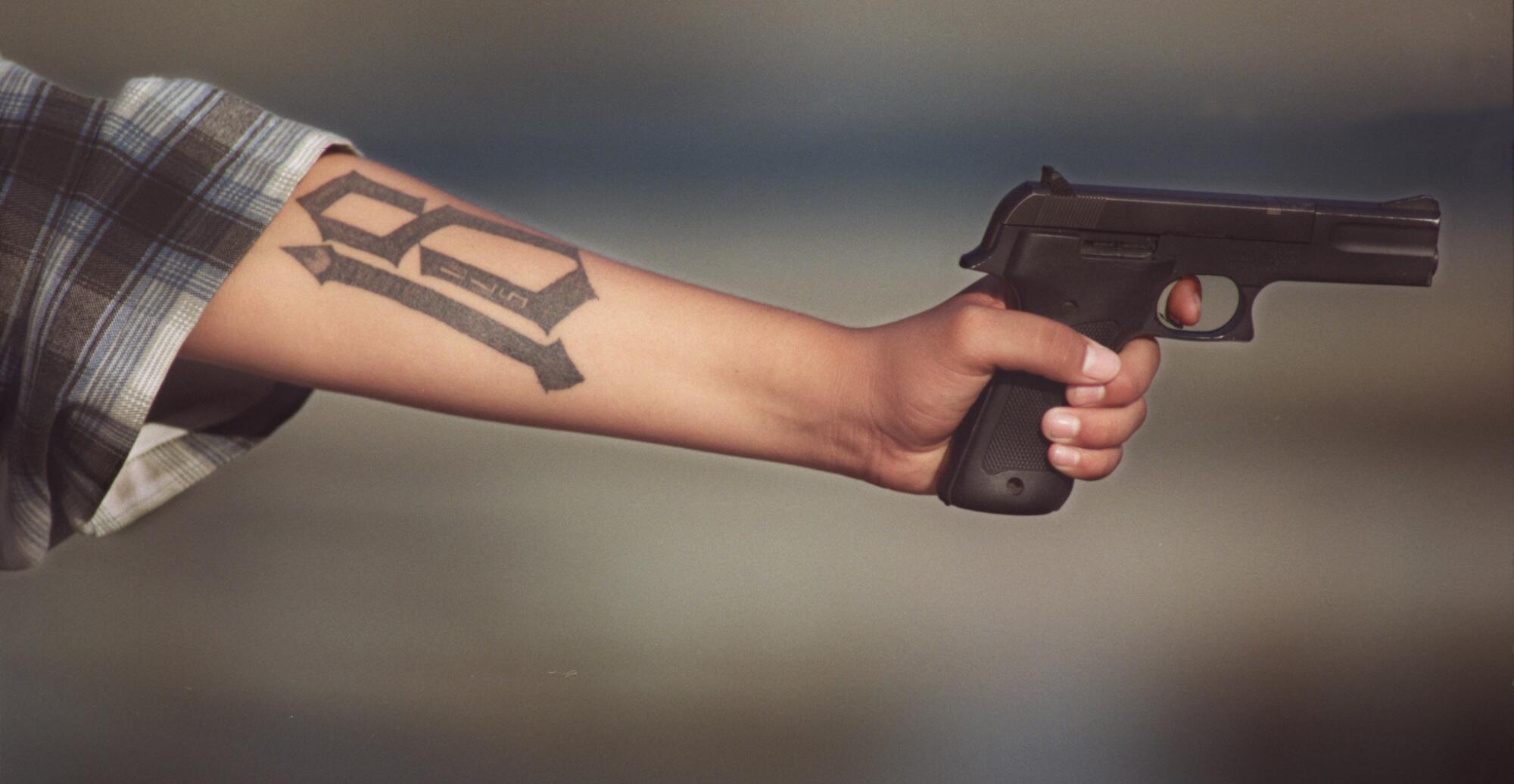
An 18th Street gang member displays a .22-caliber handgun in Southeast Los Angeles.
(Aurelio Jose Barrera / Los Angeles Times)
More to Read
Sign up for Essential California
The most important California stories and recommendations in your inbox every morning.
You may occasionally receive promotional content from the Los Angeles Times.


